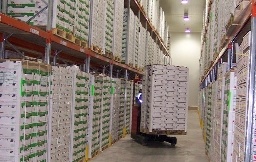The purpose of Stock Control
 A key purpose of stock control is to minimise stocks and the costs of holding stocks, while ensuring that firms have sufficient stocks to meet customer needs. This proposition may sound simple, but it is complicated by fluctuations in demand; only some of which may be predictable.
A key purpose of stock control is to minimise stocks and the costs of holding stocks, while ensuring that firms have sufficient stocks to meet customer needs. This proposition may sound simple, but it is complicated by fluctuations in demand; only some of which may be predictable.
The main reason for holding stocks of work-in-progress is to allow greater flexibility in the utilisation of machinery, while holding finished goods in stock allows for variations in consumer demand patterns. The demand for certain products, for example, is influenced by the weather. A sudden cold or hot spell can affect demand patterns significantly and producers may suddenly find themselves running out of stocks completely or alternatively, having excess stocks and facing the problems associated with storage and storage costs.
Costs of holding stocks
While it is possible to measure the components of holding cost, it is common to estimate them as at least one-third the value of the stored goods per year. So, if the stock value is $600,000, then the cost of holding that stock is likely to be around $200,000. This percentage can be higher for perishable items or items requiring specialised facilities or a higher level of protection.
Holding stock is one thing, doing it efficiently is another. Firms must:
- Ensure that stock rotation takes place. Many materials have a shelf life. Firms must be careful that this date is not exceeded. Stocks need to be stacked and recorded so that the oldest material is used first. This is sometimes known as FIFO or 'First In, First Out'.
- Ensure that wastage is minimised. Stock needs to be looked after. It must not be stacked too high and it also must be handled carefully. Wastage will also include theft, so security must be sufficient, especially for valuable materials.
So, the direct costs of holding costs include:
- Warehousing fees including security charges, rent and insurance
- Losses from theft or damage
- Obsolescence - 'dead stock' created by fashion change
- Taxes
- Administration e.g. labour costs of processing orders and the inspection and return of poor quality products
- Interest on the loans taken out to create the inventory in the first place
One of the main major causes of business failure is poor cash flow. Stock is a liquidity issue, because stock represents tied-up capital, which cannot be released until raw materials are turned into finished goods and then sold. Having money tied up in stock is not just the cost of tying up liquidity, but also the opportunity cost of money that could be deployed elsewhere, such as investing in more capacity.
Cost of inadequate stock levels
While there can be significant costs involved in holding high stock levels, there are also significant risks and associated costs, of holding low levels of stock, which may result in a stock-out situation. This situation could have some of the following consequences:
- Inability to satisfy unexpected large orders and lost sales - when faced with a large order the firm may choose to meet this and let existing smaller customers down, or alternatively refuse the new large order, which may have future costs as well, if that business places orders with competitors who can meet their demand.
- Loss of goodwill - as a result of failing to meet customer orders, the word may get out that the business is unreliable.
- Uneconomic purchasing orders - small production runs may mean that the firm buys raw materials in relatively small quantities; possibly losing out on bulk discounts.
-
 Longer delivery lead times - in a world of instant gratification and customer experience with online suppliers such as Amazon.com, expectations of quick delivery times are increasing. Firms which can promise delivery, say within 24 hours, may win an order over those businesses that have longer delivery times.
Longer delivery lead times - in a world of instant gratification and customer experience with online suppliers such as Amazon.com, expectations of quick delivery times are increasing. Firms which can promise delivery, say within 24 hours, may win an order over those businesses that have longer delivery times. - Risk of production shut-down - if a firm holds low volumes of raw materials, any delivery failure by suppliers my result in a loss of production.
The question therefore arises: how much stock should a firm hold?
There are two extreme answers to this question:
Stockpiling
- this ensures that the firm never runs out of raw materials of finished items as the firm always has stocks, 'just-in-case' (JIC) of large and/or unexpected orders
- is an easy way of managing stock
- is expensive in stock costs, but cheap in purchasing and management costs
none/very little
- this relies on a non-traditional approach to stock management such as 'Just-in-time' (JIT)
- is a difficult way of managing stock in terms of purchasing systems and management
- the firm may not obtain full discounts on smaller orders
- risks loss of customer and goodwill
Ultimately, the decision may come down to the existing stock control system the firm is presently operating and its willingness to change to an alternative.
Stock control systems

Stock control
Stock control is the sum total of policies, practices and procedures that a firm follows to ensure that its stocks are kept at levels consistent both with meeting predetermined standards of service and with releasing funds for working capital.
